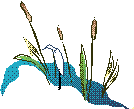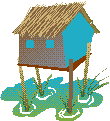|
|
|
Ex: Hardness, Chlorine, and DO We are proposing to put into action a new water testing method using our water testing kits that we received via Global Lab. We are going to be testing lead with our environmental field survey kit, pH, water hardness, chlorine, and dissolved oxygen with our Global Lab kit, all in different areas. We are going to test different areas with different bodies of water, pond, creek, water fountain, drainage ditch, and toilet.Thinking of you always, Bloomington, Indiana Water Study Ex: Acid Rain Evaporated from Land vs Oocean If you look at the PH at Ramstein, most of our water is rain from Atlantic storms and gets to use before it goes over any industrial areas, and it is a quick trip from the Atlantic coast to us. Our PH values in our forest & stream are in the range of 5-7. This would help support the above ideas on ocean water. If the students at Maryknoll would do PH on Hawaii rain, this might be a good check also. Global Lab Ramstein, Germany RT replies: I think that rain that comes from the evaporation of ocean water should be very similar to that from evaporation over land. (This suggests an experiment--condense water evaporating from pure and salty water and see whether there is any difference.) Very near the ocean there could be salt spray mixed with rain that would be salty. |
Gray Water: Testing for Detergents We have observed foam-like materials in streams and lakes in our area. According to research these materials may be from detergents from washing machines or use of soaps. We will test for the presence of detergents, total phosphates and other basic parimeters (ph, DO, alkalinity, temperature). We will also map areas along both sides of the stream or lake location and identify the kinds of land use within 100 feet of the water body. The towns of Ashburnham and Westminster have had continuous problems with lake eutrophication. We will attempt to determine if the location of residential buildings may have an impact on this. Depending on our findings, we may share the information with Lake Associations at the tested lakes, and the appropriate state/local agencies. Sincerely, Tricia Cote Stacie Stiles Josh Waxlax Barcelona Wells in Danger We are students in Escola Pia de Sitges, near Barcelona in Spain. We are sixteen and seventeen years old, and we are finishing our secondary school. We study Chemistry, Physics and more other things... Our work in Global Lab is to find the level of infiltration of sea water in the subterranean water. Next data is the concentration of ion chlorine (Cl-) in the water of wells, with the distance from the sea. The concentration is very high in wells near the see. This an important problem in our environment. To make this measurements the procedure is the following: Titrate the Cl- in water from wells with AgNO3 Calculate the concentration in water in g/L Our names are: Angels, Vinyet, Yolanda, Ivan, Xavi, Diana, Fernado, Raul, Alex RTinker response: Your study is very interesting. I'm surprised at how far from the sea the salt water infiltrates. Why does the salt water infiltrate groundwater so far from the sea? One factor might be the elevation of the wells. Is the land fairly low (in elevation) where the wells that you sampled are located? How deep are the wells? I'm trying to create a picture in my mind of where the wells are located with respect to the sea both in terms of distance and elevation. I'm sure there are other factors as well. What are they? How do they work? Hawaii Water Study -Christina Doo, Lori Fung, Carol Ingel and Patrick Klein The purpose of our science project was that we wanted to learn more about the water that surrounds us and the water we swim in when we go to the beach/bay. We also wanted to know whether the water was safe and healthy. Since we live on an island that sits in the Pacific Ocean, we needed to choose certain beaches/bays that would give us a better view of the whole island. After looking at all the beaches/bays on a map and then incorporating the location in which we live, we concluded that the most convenient beaches/bays would be Ala Moana Beach, Kaneoche Bay and Kailua Bay. In order for us to achieve what we wanted, we thought of some experiments and tests that we could conduct. With the help of our Global Lab and Mrs Rogers we decided on a few tests: --pH testing --phosphate testing --dissolved oxygen testing --turbidity testing --nitrate testing --salt content (Our last test is salt content. We just wanted to find out which beach/bay contains the most salt. With this test we plan to place a certain amount of beach/bay water in a beaker and evaporate all the water leaving the salt behind.) (More on tests**) |
Ex: Nutrients and Plant Species (Denmark) Amtsgymnasiet i Snderborg (asgdenmark) Denmark When we selected our site we chose the pond not far from the school. It would be interesting to be able to see the changes over the seasons concerning both contents of nutrients (using different strips + a spectophotometer) and the different species that bloom at different times of the year. So we would measure both biotic (macrro-index + a botanical investigation) and abiotic factors as temperature, pH, oxygen, nitrate, phosphorus, etc. Regards, Mogens Winther, Birthe Zimmermann. |
Example: Tides and Coastal Systems (Massachusetts) Since your dealing with coastal environments, tides are a very important force in your ecosystem. What do we really know about tidal flow? Question: 1. Exactly what physical phenomenon (one or more) causes tides? 2. What are the physical and chemical effects of tidal flow on both the physical and biological features of the coastal environment? 3. Why is tidal flow so important to the biological structure of a coastal ecosystem? Possible projects range from studying intertidal zones, monitoring salt marshes and estuaries, examining shore bird populations, zooplankton, phytoplankton, water quality, marine invertebrates and fisheries biology studies. The physical and biological demands of where freshwater, seawater and land all meet (estuaries) is an exciting area of research. Specifically, we may want to examine the relationship of temperature, salinity, dissolved oxygen, pH, water currents and sedimentation. Possibly we can test areas and organisms for the accumulation of pollutants, along with examining the diversity and abundance of the higher plants. � Sincerely, Steve Vose, Ken Zwicker |
Example: Design a Water Sampling Bottle School 520 asked about a water sampling bottle, one capable of sampling at a depth of 30m. Steve Bannasch (Global Lab) and James Armstrong (in TERC's PSL project) had fun designing their own. Maybe your class would be interested in designing one. Steve and James' design (so far) has a syringe pump, sampling beaker, cord, rope, flexible plastic tubing, markers, marine plywood, a small cork, and a weight. Oh yes, their design also had a boat (not strictly necessary!) Maybe you will try to figure it out. |
 Example: Build A Wetland Example: Build A Wetland"One neat way of cleansing water naturally is through the use of artificial wetlands. The EPA requires that these types of operations have a "no-discharge" permit. That means that NOTHING is to leave the property. Period. So what these operations are doing is constructing an artificial wetland where wastewater enters at one end, and the usual assortment of wetland plants filter out most of the waste materials. It then filters through to a second, third, and fourth part of the wetland for further filtration, all natural, of course, until at the end the water without doing anything else to it is at veritable drinking water quality. It can then be used elsewhere on the property, or in some cases, can be discharged. I got to see several of these this past summer. One was a home wetland, and really was rather unremarkable. Most of it looked just like a rock garden with some very expensive flowering bulbs in it. The other one was at the Texas A&M Research Station dairy outside Stephenville. It looked more like your conventional marsh with reeds, cattails, and that kind of stuff growing in it. The difference was that at any time they could go and draw out a sample of water to check its quality. It was really amazing. Maybe [build it] in a kiddie wading pool where you could put tubing at various heights in it to withdraw water, I don't know. Then have it divided up somehow (probably charcoal, clay, and mesh netting) so that you would have several cells for the water to travel though." GL teacher Linda Maston, Texas |
Ex: Comparing Acid Rain (Kuniarz, Poland) 2509 schools from 13 European countries (800 schools from Poland) have taken part in Acid Rain Project. All the school children carried out daily measurements from October 11th to November 5th. In the Baltic States, Denmark and the northern part of Poland we find that some areas have acidic rain and other areas non-acidic rain. The school children recorded a very interesting result in Hungary. The rain was not at all acidic in this country! An average pH is above 5.6 (such pure rain water!) But it is probably because in Hungary there is a lot of calcium in the air, not because the air is not polluted in this country. |
| Back to Water Index |
 IN THE WATER LABORATORY:
IN THE WATER LABORATORY: